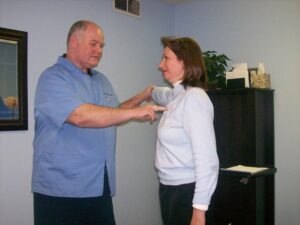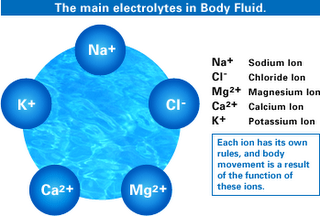History of Cause Point Correlative Testing

I first became interested in Chiropractic Health care when I was in college studying for my B.S. in Biological Sciences. I was having sinus problems and sinus headaches and visited the medical doctor for help. After multiple visits and multiple drugs he prescribed the same drug I had initially started with. I realized that this approach wasn’t working. My sister had a friend who was a chiropractor, and suggested I try him. The relief I experienced was enough for me to change my direction of study from Ecology and Field Biology to Chiropractic. I became a chiropractor in 1984 upon graduation from Palmer College, Magna Cum Laude (straight A’s).
At Palmer my area of expertise was spinal bio-mechanics. I was president of the spinal bio-mechanics club, worked at the Spinal Biomechanics Institute in Tacoma Washington with Burl Pettibon, D.C. and helped teach spinal bio-mechanics to doctors and students at Palmer College. I practiced successfully for over 10 years using a highly precise technique which specifically calculated the line of drive of the chiropractic adjustment for each person for optimal correction in each individual.
Sometime back in the early 1990’s, I was adjusting a patient and I sat back and said to myself, “The reason that this person is not getting better is not because I am ½ degree off in the direction of my chiropractic correction”. I realized there were other factors involved and started looking. Somewhere during the search, I called and talked to Dan Beeson D.C. in Portland Oregon and asked for his advice. He said that if I wanted to see miracles happen, I should go to a Dr. Richard Versandall seminar. So I did. Dr. Versandall had developed a technique called Contact Reflex Analysis. With this technique the body could be screened by checking points on the body, not unlike acupuncture points, through the use of a muscle strength test; while in contact with the point. In a very skeptical frame of mind I let Dr. Versandall examine me. He spotted a blood sugar problem I had been plagued with for years. I took the supplements, it helped. As a result I went to seminars and learned Contact Reflex Analysis and began using it in my practice, with amazing results. Patients spines began staying in place, conditions that had responded to nothing else both medically or chiropractic became better, even diseases that had no “cure” disappeared.
Contact Reflex Analysis had it’s imperfections however. Since the basic treatment involved broad nutritional protocols for each reflex point that showed up, it was very easy to become overwhelmed with the amount of supplementation required. I was personally taking 150 supplements per day. The problem was that even if a program works; if the person can’t do the program it doesn’t have a lot of value. I had to find some way to make it more specific to the individual so that I could get results that were as good with less supplements (and cost to the patient).
In the mid 90’s I went to a seminar put on by Jack Caputo D.C., and at this seminar he brought in a nutritional “test kit”. I later learned that this was put together for practitioners who did muscle testing. Originally it was for doctors familiar with applied kinesiology type muscle testing. Dr. Jack would have the person hold the test kit vial of the nutritional product in question, and then test the muscle strength of the person. If it would handle the malfunction, the person would have a strong muscle when it was tested against resistance. If not, the muscle would be weak. He also showed how to use a muscle test for the amount of each supplement that was needed. Basically you would place a handful of the supplement, like Calcium Lactate for instance, in the person’s hand and test the muscle strength. Next you removed the supplement one at a time and re-tested the strength until the muscle went weak. That meant you now don’t have enough supplements, so you put one back and that was how many supplements the patient needed. For the next several years this is what I did. I found that the more specific the supplement was to the individuals’ needs, the less different supplements, and less total amount of supplements, the person would need.
I also set about expanding the number of different supplements in my arsenal. For example, perhaps 6 Milk Thistle would handle a certain condition in an individual. Three Red Clover would also handle it. I could do the same thing with half the number of supplements; if I prescribed Red Clover in this case. Now I had a new problem. By the time that I tested all of the products that I had on a person, and the dosage numbers of each product, it was taking quite a long time to see each individual patient. Neither the patient nor myself could afford the time it was taking to treat each individual. My solution to this was to narrow the field of supplements by using tests points, to make it more specific.
Dr. Versandall had major points that he would test, and minor or sub-points. He discovered that you could brush down on the major point and temporarily “block” the point so that it wouldn’t show up. You could now pick up on other minor or “sub-points”. For instance if the gut reflex point tested positively (bad), you could brush down on the gut reflex and could check the liver, gallbladder, stomach, pancreas, etc. to see which of the organs was responsible for the gut or digestion reflex to be malfunctioning. In a sense, you could block the reflex point to see what was underneath or causing it. I saw that you could use this principle to make the supplement more specific. In the example of digestion, if the liver showed up as causing (or underneath) the digestion reflex point, instead of giving a lot of general digestive aid you could give a product more specific for the liver and they wouldn’t need to take as much to get the same or better result. This blocking of the reflex could also be used to find out what organ malfunction came before the one that is currently being treated in order to treat difficult cases or for future prevention.
One day I was testing a patient and happened to ponder, “if blocking a point can give you the information on what was underneath or causing the present condition/malfunction, I wonder if you could release or unblock a point to see what came after the present malfunction” or in other words, what it was affecting. Cause Point Correlative Testing was born. I didn’t call it that at the time. In my mind I was still doing Contact Reflex Analysis, just trying to make it more specific so I could have a better idea of what was going on and cut down on all of the supplements that were being taken.
After a while I went to Contact Reflex Analysis seminars and realized I wasn’t doing the same thing as was being taught. Dr.Versandall had branched into using a lot of electronic devices and was constantly changing the points all around. Whether this was a good thing or a bad thing isn’t the issue, the thing was I just didn’t want to practice in that fashion. Shortly afterwards, Dr. Versandall stopped using Standard Process supplements, a staple in my practice. I was left in a situation where I had to decide what to do. Becoming a muscle testing technique “guru” was never what I wanted (and still don’t want) to do. But out of necessity, I had to go back to basics and develop a routine for testing the major points on the body so that all was included without making it needlessly complex. I approached it from the viewpoint of the way food goes into the body, is processed and travels to the various organs, keeping in mind how all of the organs work together to help the body as a whole perform it’s function and maintain homeostasis.
Using the principle of unraveling causes and effects in the body, I located areas I could check for what I call basic causes of disease. This was possible due to the fact that certain of these basic causes tended to come in by certain pathways and collect and affect certain tissues. By working the two together – basic causes of malfunction and effects of malfunction, a routine of points to check was refined to yield the system I use today, which I call Cause Point Correlative Testing. It is not perfect; no healing art I know is, but it works wonderfully and has served myself and others quite well.
David A. Murdock, D.C.











